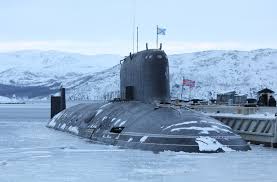Introduction
In recent years, Russian submarines have become a focal point of military and geopolitical discussions, highlighting their intricate role in national security and international relations. With ongoing tensions in Eastern Europe and the Arctic, understanding the capabilities and advancements of Russian submarines is paramount for assessing global security dynamics.
Recent Developments
As of 2023, the Russian Navy has continued its efforts to modernise and expand its submarine fleet significantly. The current inventory comprises various classes, including the Yasen-M and Borei-A submarines, equipped with advanced missile systems and stealth technology. Notably, the Yasen-M class, which can carry around 30 missiles, has been showcased in multiple naval exercises, demonstrating both power and precision.
In September 2023, reports emerged of increased deployment of these submarines in the Baltic and Arctic regions, as Russia seeks to assert its presence. Such deployments have sparked concerns among NATO allies, prompting a reassessment of naval strategies in response to potential threats. Additionally, the Northern Fleet has launched several drills to reinforce its submarine capabilities, indicating a strategic emphasis on undersea warfare.
Technological Advancements
One of the critical aspects of Russian submarines is their technological edge, particularly in stealth and missile capabilities. Russia’s development of the Zircon hypersonic missiles, for instance, has garnered international attention due to their unmatched speed and accuracy. These missiles are intended for deployment on submarines, further enhancing the threat level and global power dynamics.
Geopolitical Implications
The expansion and modernization of Russian submarines have broader geopolitical implications, especially in the context of NATO-Russia relations. The Arctic, rich in resources and strategic shipping lanes, has become a contentious area. Russia claims extensive territorial waters and continues to expand its military presence in the region, including deploying submarines to secure these interests. Moreover, the changing climate is opening new pathways in the Arctic, increasing the strategic importance of submarines for territorial control.
Conclusion
The advancements and strategic deployment of Russian submarines underscore a pivotal shift in naval warfare and global security. As tensions rise and the geopolitical landscape evolves, understanding the implications of these underwater assets is crucial for predicting future conflicts and assessing their impact on international relations. As such, observers will need to monitor developments closely, as Russian naval capabilities continue to shape both regional and global security paradigms.
